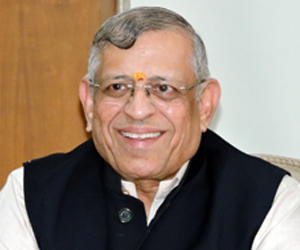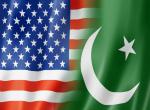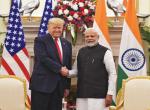French intelligence has named Abdel-Hamid Abu Oud, a Belgian national, as the mastermind behind the Paris carnage. He was killed later. Four of the seven attackers who perished in the process are French. Fifth, the first woman bomber of Europe, later killed herself. Sixth, possibly a Syrian, had landed in Greece in the guise of a refugee and weeks later he bombed Paris. An Egyptian too was perhaps involved. The configuration of unrelated persons raises some fundamental questions that touch the basics. Syrians may target France which had bombed their nation. But why should a Belgian, when France has done no harm to his nation. What have the four Frenchmen to do with Syria or Iraq by birth, language or culture? Why should they target their own nation? Mow down their own people? How they blew themselves to smithereens to harm their own motherland brings out the intensity of their hate. Why such hate for one’s own nation, culture and people? Belgian, Syrian and French, including a woman — the group cannot be more disparate. No one can seriously deny that the common idea that bound and motivated the disparate group is Islam. What strand of Islam it was may be debated, but that their motivation is some strand of Islam is indisputable. The Islamic State of Iraq and Syria (IS) has proudly claimed that it did the Jihad in Paris. But the IS is only the hand that hits. Ideology is that what really motivates the hand. What, and not who, made this disparate group converge is the real issue.
IS Emerges
The IS, led by its supremo Abu Bakr Al-Baghdadi, aims to re-install the Caliphate — the Islamic State to rule the Muslim world — under a Caliph believed to be descendent of Prophet Muhammad. Tracing the lineage of Al-Baghdadi to the Prophet, the IS appointed Al-Baghdadi as the Caliph, in June 2014. Relying on the Islamic law which mandates all Muslims to owe allegiance to the Caliph, Al-Baghdadi called upon Muslims through a radio message in July 2014 to immigrate to the Islamic State to perform their highest duty of Jihad. Responding to his call, within nine months, by March 2015, some 22,000 Jihadists from 100 nations landed, on their own, in Syria and Iraq. By May, their number rose to 25,000. Take France, the latest victim of Jihad, for instance. Some 520 French (116 of them women) are currently engaged in Jihad in Syria and Iraq with some 137 already martyred.
Islamic terrorist outfits and mobile terrorists are multiplying exponentially. In November 2014, the UAE named 83 Islamist terrorist groups. A study says that, by November 2014, some 60 Jihadist groups in 30 countries had announced support to the IS. The “Caliph” Al-Baghdadi now controls vast parts of Iraq and Syria — in terms of area, population and revenues. Media reported in September that Russian intelligence had offered to the Central Intelligence Agency (US) and the Interpol a massive list of 87,000 Jihadists roaming around in US and Europe, but they refused to receive it because it was “not politically viable in the present atmosphere”. The Paris assault happened exactly 60 days later. Is it a surprise then that on just a radio call of Al-Baghdadi, thousands of readymade Jihadists roaming all over the world rushed to join IS-led Jihad? Al-Baghdadi just opened the tap of readily available Jihadists. What, then, motivated the huge army of Jihadists ready on the tap? It calls for a throw back to 14th century when, after long lull, militant Jihad again became part of Islamic tradition — an interesting insight into the history of Jihad that has huge contemporary relevance.
Ibn Taymiyyah
In his book God’s Terrorists: The Wahhabi Cult and the Hidden Roots of Modern Jihad, Charles Allen, a renowned historian of the British Raj in India, traces the history of Wahhabism, the guiding ideology of Islamist modern terrorism. Wahhabism was founded in the 18th century but its seeds were sown centuries before. The 14th century Islamic scholar who re-invented and re-weaponised the concept of Jihad was Ibn Taymiyyah.
In Prophet Mohammed’s times, Jihad was an obligation on Muslims to strive for their faith until the entire world had converted or submitted to Islamic authority. But as Islam transformed into a multi-ethnic world religion, the literalist view of Jihad gave way to pragmatism. The pragmatists cited the famous declaration of the Prophet in Hadith on his return from the battle of Bard, that marked the end of his military campaign against the polytheists, that the Lesser Jihad (Jihad Kabeer) was over; the Greater Jihad (Jihad Akbar) had started. This statement was interpreted in Islam as meaning that the outer and less important physical struggle for Islam was over and had given way to a more important inner, moral struggle. But, after Mongols devastated the Islamic heartland, Ibn Taymiyyah found that the Greater Jihad idea had weakened Islam. He stood for a literal, and against a liberal, idea of Jihad. He defied the Prophet Himself on the pragmatic Greater Jihad. Citing two verses in the Quran (Chapter 2 verse 193; Chapter 8 verse 39) Taymiyya argued that the Prophet’s division of Jihad in Hadith was not authentic because it contradicted the words of God in Koran. He declared that the (indivisible) Jihad against Islam’s adversaries was the finest act a Muslim could perform. Taymiyyah also classified the infidels of Islam in four categories: the Christian; the Muslims with infidel habits unless brought back to Islam; the Muslims not carrying out Islam’s rituals; and those who rejected Islam while still claiming to be Muslims. He declared that no peace was possible with the first two and the next two must be mercilessly killed.
Al-Wahhab
Taymiyya’s theology was rejected in his times. He was branded as a heretic. Even imprisoned. But, says Charles Allen, Taymiyyah’s theology continued to attract adherents. A most famous adherent of his was Muhammed Ibn Abd Al-Wahhab, who founded, in early 18th century, what is now known as the Wahhabi strand of Islam. This most virulent strand of Islam, rejected in the 14th century, was reincarnated four centuries later. Allen says that Al-Wahhab was schooled in Medina under Muhammed Hayat and his father from Sind in India, both followers of Ibn Taymiyya. They encouraged their students to “view the militant jihad as a religious duty”. When Al-Wahhab was studying in Medina, Shah Waliullah from Delhi too was in Medina studying Hadith under a Taymiyyah disciple who was the master of Al-Wahhab’s teacher. Al-Wahhab and Shah Waliullah, both young, went back to their respective countries to implement the radical teachings. In Delhi, Waliullah called for “a return to the first principles of Islam”. He attempted to restore ‘Muslim rule in Hindustan’ by even inviting the Afghan ruler Ahmed Shah Abdalli to invade India and destroy the Hindu Marathas in battle to bring back the golden days of Mughal Emperor Aurangazeb. But Ahmed Shah was defeated and the Maratha gained dominance in northern India.
But Waliullah’s Medina-mate Al-Wahhab went beyond. Allen says he “was able to construct and apply almost unchallenged a brand of confrontational and heartless Islam, the like of which had not been seen since the days of Mahmud Ghazni, the butcher, who led twelve loot-and-destroy raids on India in the eleventh century, justifying his actions in the name of Islam.” Al-Wahhab’s book Call to Unity, which later became a four-volume affair, expounded the Wahhabi theology. It declared that there should be but one interpretation of the Quran and Hadith — Al-Wahhab’s — and none else. Pointing out that Islam rose only by Jihad against idolaters and polytheists, it concluded that loving the true Muslims and hating the infidels was the only way — the Wahhabi way.
Re-weaponised Jihad
A historic turn came in Islamic history in 1744 when Al-Wahhab allied with Muhammed Ibn Saud, a reputed warrior and leader of a sub-branch of the powerful Aneiza tribe. They mutually recognised each other — Saud as the secular leader (Emir) and Al-Wahhab as the religious head (Imam). The rulers of Saudi Arabia are the descendants of Muhammed Ibn Saud. Thanks to Saudi Arabia owning up Al-Wahhab’s theology, Ibn Taymiyya, outlawed long ago, now occupies a place of honour next only to Al-Wahhab’s.
IS is the latest manifestation of Wahhabi Islam. It attracts Jihadists from all over the world on the theology of Al-Wahhab — read Ibn Taymiyyah. It gets funded and supported. Russian President Putin has said that he has shared with G20 leaders the details of how individuals from 40 nations, including some G20 constituents, fund the IS. Many liberals still think that terrorists are just a handful of misguided persons. Thousands are not a few. They are a mobile army conscripted by Wahhabi Islam. The Taymiyyah-Wabhabi theology guides millions and millions of Muslims who are the catchment constituency from which thousands of Jihadists emerge on the tap. The other strands of Islam, moderate or immoderate, are struggling — in Syria, Iraq, Egypt, Afghanistan and elsewhere — for survival. Ibn Taymiyyah’s theology is at the root of the problem of Islamist terror. Is Abu Oud then the mastermind of Paris Jihad? Not at all. He is at best the master hand. The mastermind is Ibn Taymiyyah who re-weaponised the Jihad and that impelled Abu Oud. It is Taymiyyah’s Jihadi exposition which blew up Paris on Friday last. In the last several decades, his concept of Jihad has snuffed out hundreds of thousands of innocent lives.
Any battle to recover and save moderate Islam should start with disowning Ibn Taymiyyah and Al-Wahhab — the very definitions of today’s hate and terror. There is every reason for moderate Muslims to discard them. For, Ibn Taymiyyah defied the Prophet and Al-Wahhab endorsed Taymiyyah. Will the Islamic world — Saudis in particular — declare them in one voice as apostates of Islam? This will hopefully cause a healthy debate within Islam. Moderate Muslims should ponder.
PS: So long as the world looks at which Islamic outfit organises the Jihad and not look into what so powerfully motivates the Jihadi to kill himself to kill others, it will be missing the cause and treating the symptoms. So long as the root cause remains unaddressed, even if the world weakens one outfit another will promptly emerge — like the IS emerged after the Al Qaeda weakened.










Post new comment